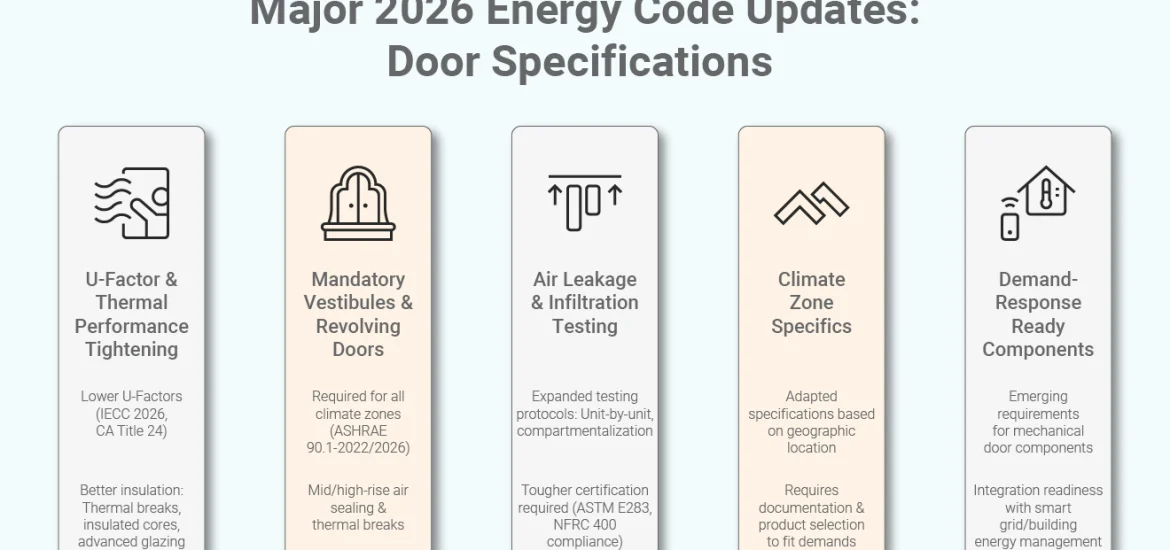The 2026 energy code introduces stricter requirements for how commercial doors are designed, tested, and specified.
The infographic titled “Major 2026 Energy Code Updates: Door Specifications” highlights the key changes in commercial door requirements driven by new energy codes for 2026.
It features five major update areas
- U-Factor and thermal tightening
- Mandatory vestibules and revolving doors
- Expanded air leakage and infiltration testing
- Climate zone adaptation
- Demand-response-ready components.




